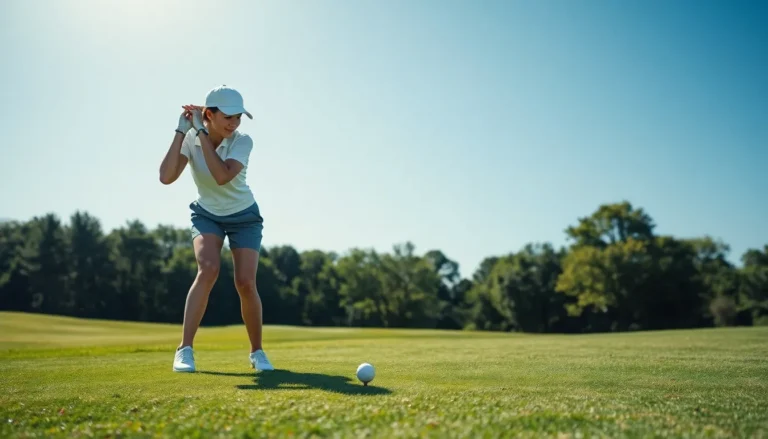Imagine a world where the only likes you got were from your grandma’s homemade cookies or the occasional thumbs-up from a friend in person. Life before social media was like living in a sitcom without a laugh track—awkward moments were real and connections were made face-to-face.
People actually had to call each other to make plans instead of just sending a quick DM. Remember those days? When “going viral” meant catching a cold instead of becoming an overnight sensation? While today’s digital landscape keeps everyone connected, it’s hard not to chuckle at the simplicity of a time when a good conversation didn’t require a Wi-Fi password. So let’s take a nostalgic stroll down memory lane and explore what life was like before hashtags and selfies ruled the day.
Table of Contents
ToggleLife Before Social Media
Life before social media revolved around direct interactions. Friends made plans through phone calls rather than texting. Group activities flourished with spontaneous decisions, fostering a sense of adventure. Many cherished physical gatherings, where face-to-face conversations allowed for deeper connections. People relied on newspapers and magazines for news updates instead of scrolling through feeds.
Traditional media served as the primary source of entertainment. Families gathered around the television at specific times to watch their favorite shows. Game nights featured board games, encouraging lively discussions and laughter. Social outings involved meeting at parks, cafes, or homes, creating memories that felt more tangible.
Shopping provided another avenue for social engagement. Individuals visited local stores and markets, often exchanging pleasantries with shopkeepers. Making purchases allowed for personal interaction, unlike online checkouts where anonymity prevails. Community events such as fairs and festivals highlighted local culture, drawing crowds for music, food, and art.
Traveling offered opportunities to disconnect from technology. Many ventured to nature without the temptation to share experiences instantly online. Exploring paths and visiting landmarks created lasting memories distinct from digital documentation. Everyone embraced simplicity, focusing on real-life connections over virtual updates.
Listening to music involved shared experiences through mixtapes and radio playlists. Friends exchanged favorite tracks, leading to discussions about lyrics and emotions. Discovering new songs often happened at live concerts, where audiences connected through shared enthusiasm.
Such interactions fostered authenticity in relationships. Generating meaningful connections depended on invested time and effort. By embracing life before social media, individuals flourished in a world defined by personal interaction and genuine experiences.
Communication Methods

Life before social media relied heavily on personal connections. Individuals often engaged in direct conversations, which fostered deeper relationships.
Face-to-Face Interactions
Real-life conversations allowed for immediate feedback and emotional connection. Friends gathered for coffee or meals, creating shared memories through laughter and discussions. Events like parties and community gatherings encouraged social bonds. Individuals participated in activities together, from playing sports to simply hanging out. This face-to-face culture built a sense of belonging and community that digital platforms struggle to replicate.
Telephone Conversations
Telephones served as primary tools for communication, transforming how people connected. Making a call often initiated plans or shared updates, making conversations more personal. Unlike today’s texts, phone calls required active engagement and listening. Conversations lasted longer, as the focus remained solely on the dialogue. Individuals cherished moments of shared news or laughter over the phone, reinforcing connections.
Entertainment and Leisure
Entertainment and leisure activities before social media revolved around physical interactions and community engagement. People sought joy through outdoor activities and traditional media.
Outside Activities
Families and friends enjoyed spending time outdoors, participating in activities such as picnics, hiking, and playing sports. Community parks became popular gathering spots for weekend barbecues and group games. Neighborhoods often buzzed with children riding bicycles or playing in the streets. Social events like fairs and festivals fostered vibrant community ties while keeping everyone connected. These real-life experiences built strong relationships, offering opportunities for spontaneous fun and adventure that lacked digital distractions.
Print Media Consumption
Magazines, newspapers, and books served as essential sources of information and entertainment. Families gathered around the dining table to discuss the latest news or share favorite stories. Weekly TV shows provided scheduled viewing moments, prompting households to unite for a collective experience. Print media also inspired discussions, prompting friends to lend books or magazines to one another. This tangible form of entertainment encouraged deep connections, as sharing opinions on articles or plot twists sparked engaging conversations among readers.
Information Access
Life before social media featured distinct methods for accessing information. Individuals relied heavily on traditional sources, fostering a different experience compared to today’s digital age.
Libraries and Books
Libraries served as treasure troves of knowledge. Patrons explored vast collections of books and research materials, often spending hours in serene environments. Browsing shelves cultivated discovery, leading to unexpected finds that sparked curiosity. Book clubs flourished as people gathered to discuss themes and share insights, creating communal bonds over literature. Many formed cherished habits around reading, enriching personal and collective experiences.
Word of Mouth
Word of mouth remained a primary means of sharing information. Friends exchanged stories and recommendations, ensuring details spread quickly within communities. At social gatherings, lively discussions allowed updates to flow seamlessly among acquaintances. Personal networks facilitated trust, encouraging individuals to rely on each other’s opinions over impersonal advertisements. Local events thrived on this organic, community-driven communication, amplifying excitement and engagement.
Social Connections
Social interactions before social media revolved around face-to-face engagements and direct communication. These connections fostered community ties and emphasized the importance of personal relationships.
Community Engagement
Community events served as essential platforms for social interaction. Local fairs, parades, and neighborhood gatherings brought people together, encouraging participation and collaboration. In those moments, individuals formed connections through shared experiences. Parks and recreation areas became popular meeting spaces, where families and friends engaged in games and outdoor activities. Such interactions nurtured a sense of belonging within the community, reinforcing bonds that last over time. Spontaneous conversations often arose from these encounters, further strengthening the ties that held neighborhoods together.
Family Gatherings
Family gatherings held a special significance in daily life. Sunday dinners, holiday celebrations, and birthday parties created opportunities for shared memories. These events often included storytelling, laughter, and embracing traditions. Families would come together around the table, sharing meals and discussing everyday happenings. Such interactions built emotional connections that lingered long after the events ended. Children learned values through these gatherings, ultimately shaping their relationships in the future. In many ways, these personal experiences defined familial bonds, illustrating the importance of direct communication in nurturing deep connections.
Reflecting on life before social media reveals a world rich in personal connections and genuine interactions. The charm of face-to-face conversations and spontaneous gatherings fostered deeper relationships that many find nostalgic today.
In a time when communication required effort and engagement, people cherished shared moments and laughter. Physical activities and community events brought individuals together, creating bonds that digital platforms often struggle to replicate.
As society continues to evolve, it’s essential to remember the value of these authentic connections and the joy found in everyday interactions. Embracing the simplicity of the past could inspire a more balanced approach to today’s digital landscape.




